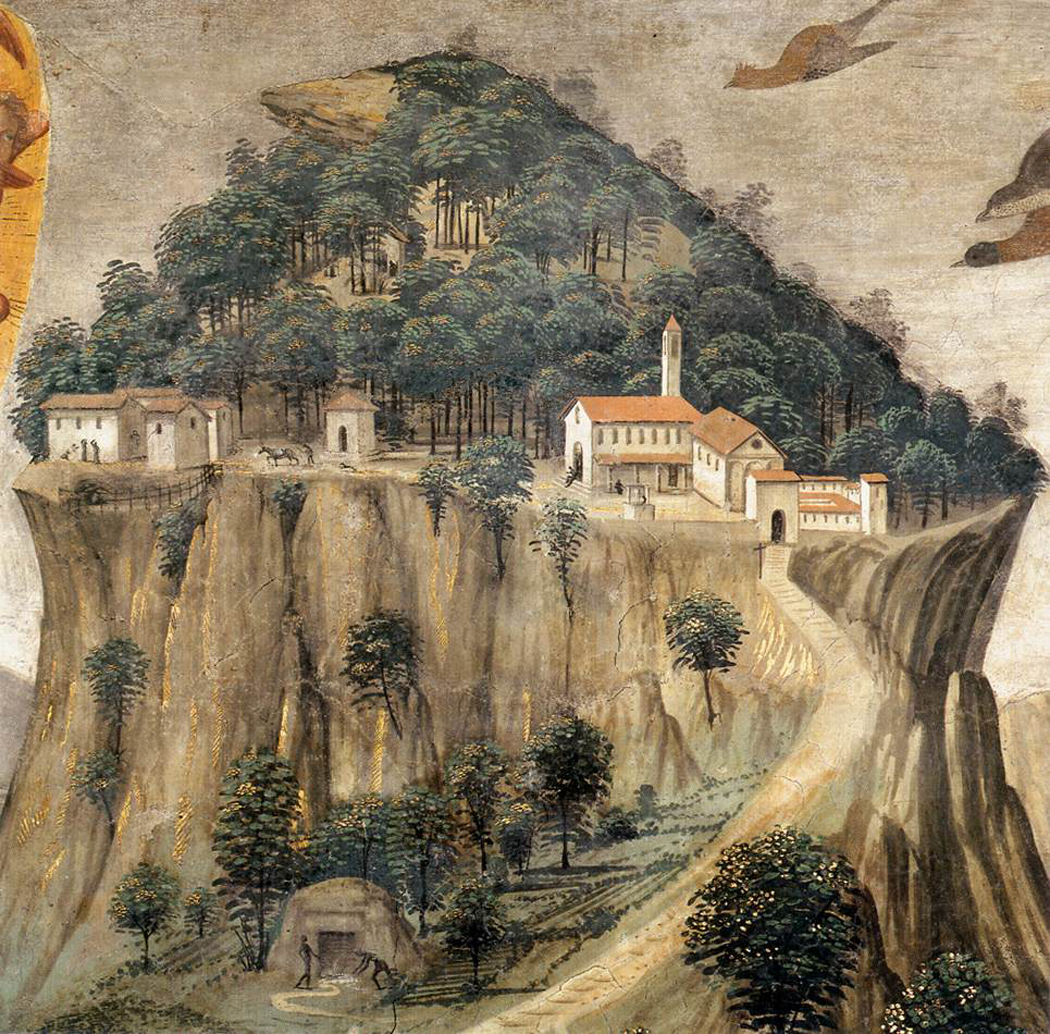St. Francis is known for his devotion to nature and generally recognised at the patron saint for the environment. However, it is not that simple to know exactly how Francis really thought about nature. One key to resolving this question is by focusing on “his garden”
In 1247 the first biographer of the Saint, Thomas de Celano, wrote his second biography of Francis, called the “Remembrance of the Desire of a Soul”. In this he uniquely tells the story of how the Saint had his garden tended:
“He commands the gardener to leave the edges of the garden undisturbed, so that in their season the green of herbs and the beauty of flowers may proclaim the beautiful Father of All. He even orders that within the garden, a smaller garden should be set aside for aromatic and flowering herbs so that those who see them may recall the memory of eternal savor.” [1]
The intriguing feature of this garden, though, is not so much its distinct features, but the fact that Celano claims that Francis had a garden at his disposal, since in a somewhat earlier polemical text about St. Francis, the Sacred Exchange between St. Francis and Lady Poverty from 1237 – 39 we learn quite the opposite. Here Lady Poverty is invited to share the banquet with the brothers and is treated to a virtual feast of bread-crusts made of barley or bran served on a carpet of grass and with a single dish made of cold water to soften the bread (that is: no dish). And then she gives the order: to bring “at least uncooked, aromatic herbs”, but they “did not have a gardener and knew nothing of a garden; however, they gathered wild herbs in the woods and placed them before her.” [2]
Thus the vignettes from the two texts sums up the two schools for remembrance, which in the decades after his death fought so viciously to frame the history of the future saint. On one hand there was a tradition according to which the brethren were and should be a group of itinerant preachers in the tradition of the early apostles. On the other hand the official hagiographers tried to domesticate the saint and make him generally palatable and recognizable according to 13th century standard of saintly behaviour: to which of course belonged the cultural topos of having a garden and working it.
A Peculiar Garden
It is well-known, the sanitizers won the day. Nevertheless, the garden, which Celano foisted upon the Saint, had some peculiar characteristics:
- It appears to have been thought of as a garden without ditches or hedges; thus in practice a garden, which was not properly delimited and might be claimed as “private property
- It also appears to have been opened up for “weeds” alias scented flowers in all their bloom and according to season. This is in strict opposition to the monastic gardener in Gregory’s dialogues, which orders a snake to guard his hedged vegetable patch and St. Godric, who scolds wild deer for stealing from his enclosed orchard at Finchale.
- Third, the garden was specifically embellished with an inner sanctum – a smaller garden – meant to hold a flower-garden, uniquely kept to provide olfactory and visual pleasures, reminding the visitor of the future heavenly pleasures awaiting the saint and his followers: the uncultivated and wild, yet abundant Eden.
As such his garden, according to Lisa Kiser, formed a contrast to the types of semi-urban landscapes, which became steadily more prevalent in the 13th century – extensively cultivated and fenced – filled with vineyards, orchards and fields. This expansion steadily robbed the poor of the wilderness, where formerly they were able to gather wild asparagus and hunt for rabbits: two Franciscan staples.
NOTES:
[1] The Remembrance of the Desire of a Soul by Thomas of Celano, book two, chapt. 123. Quoted from: Francis of Assisi. Early Documents. Published by Regis J. Armstrong et al. New City Press 2000. Vol 2, (p. 354)
[2] Sacred Exchange between St. Francis and Lady Poverty. Quoted from: Francis of Assisi. Early Documents. Published by Regis J. Armstrong et al. New City Press 1999. Vol. 1: p 552
SOURCE:
The Garden of St. Francis: Plants, Landscape and Economy in Thirteenth-Century Italy
By Lisa J. Kiser
In: Environmental History 2003, Vol 8., No. 2 pp.229 -245
FEATURED PHOTO:
Cappella Sassetti. Stigmata of Saint Francis at la Verna, by Ghirlandaio 1483 – 85. Source: Wikipediea. Notice the unditched gardens and the prayerful figure of St. Francis in the wilderness at the top of La Verna.
